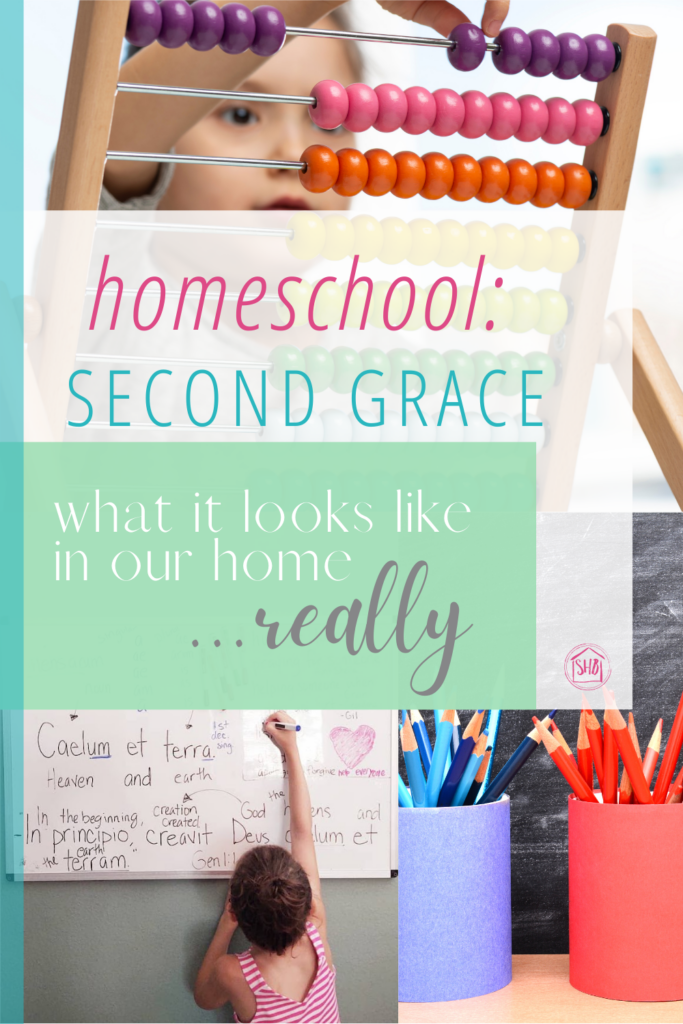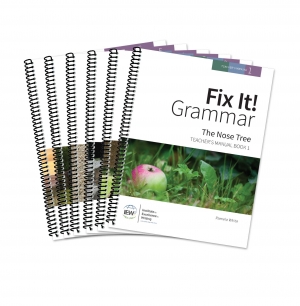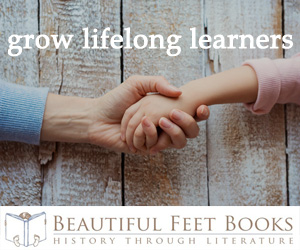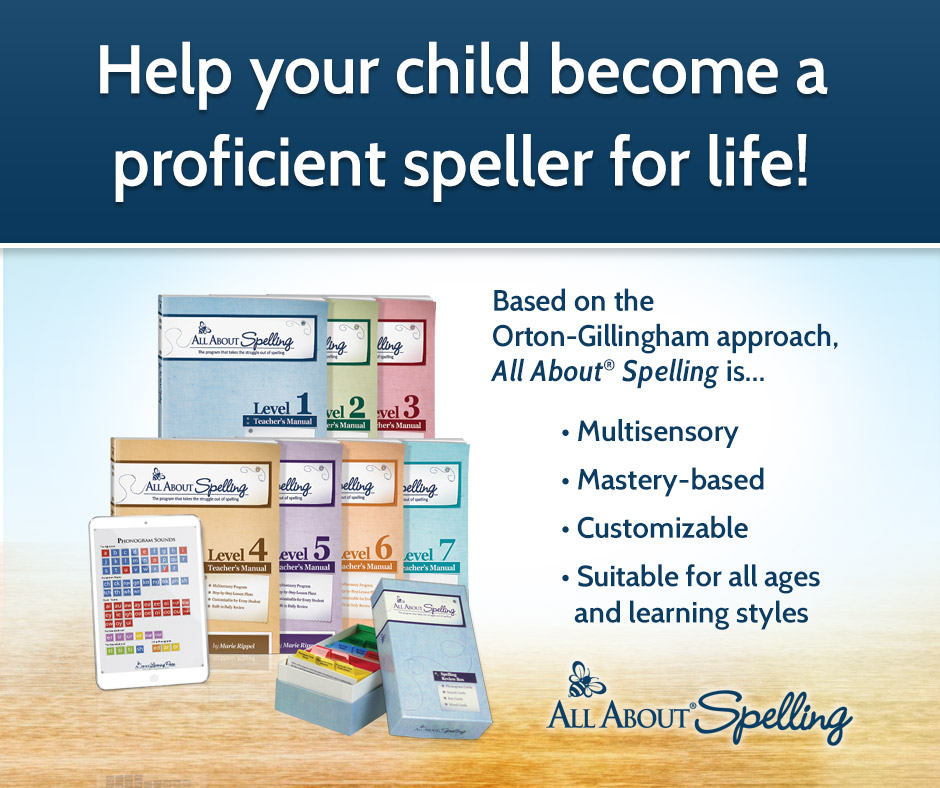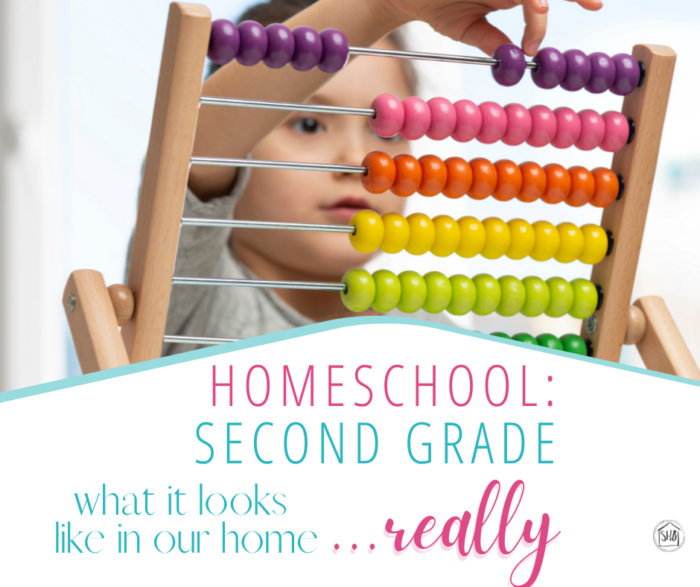
We just moved our second second-grader up to third grade. Since the experience of second grade is so fresh in my memory, I thought I would continue our Homeschool…Really Series with second grade before I go back and discuss the first grade.
I am writing this series with the intention of giving you an idea of how one homeschool does each grade. Our homeschool has many deficiencies, but it also has some great credits to its account. It amazes me how advanced my kids are in certain areas, though I am not sure what blind spots we are unaware of. Thus, I am not holding up our homeschool as any sort of exemplar of excellence. Rather this series is a “this is how we do it” series. (If you just got a song stuck in your head after reading that sentence, sorry, not sorry.)
This post may include affiliate links. If you click and make a purchase based on my recommendation, I get a small remuneration at no extra expense to you. I only recommend things I use and believe to be a blessing.
God’s Plan for Our Homeschool
In the past post where I talked about our homeschool kindergarten, I shared this passage of Scripture:
All the ways of a man are clean in his own sight,
But the LORD weighs the motives.
Commit your works to the LORD,
And your plans will be established…
The mind of man plans his way
But the LORD directs his steps.
Proverbs 16: 2-3, 9
However humbly I offer my “plans” for our homeschool each year, only God knows what is in store for that year. Only God can know the struggles we will meet. My responsibility is simply to commit my ways to Him and follow His leading.
I tend to believe the Lord’s ways to be simple. Not simple-minded – simple. Simple is what we strive for. We have no other choice most days. Our days are chaotic, but God has given this simple command – “Follow me.”
When is Second Grade?
In the previous article on kindergarten, I discussed at some length the baffling question: What is kindergarten? For this discussion of 2nd grade, I struggle to define – When is Second Grade?
I say this because, in our homeschool, we are not tied to age-grade placements. We have oddly placed birthdays that straddle at least two of my kids into various societal placements, which they buck on a regular basis. How this got into a horse riding metaphor, I am not quite sure. But if you know me, my metaphors tend to fall apart rather quickly.
The simplest answer to the question of when is second grade is after first grade. Duh. But I am talking a bit more about age-grade placement here. Our first time through second grade, my student was seven years old when she started second grade. The second time through second grade my student was seven years old when she started second grade.
That seems to answer the question that in this house seven-year-olds are second graders. But it is going to get complicated with our third tour of third grade because my student will be 6 when he starts second grade. And only God knows what second grade will look like with our youngest.
So let’s say second grade is somewhere in the 6- to 7-year-old range and comes after successful completion of first grade.
Homeschool Second Grade
I have shared before we like a blend of Classical and Charlotte Mason schooling for our kids. From kindergarten through 6th grade, we use a blend of Classical Conversations and Ambleside Online reading lists to structure our year. We use Saxon Math, too – starting with Saxon 1. Additionally, we use All About Spelling for spelling in the elementary years.
Even as I write this, it seems as though we have constructed our factory of early elementary homeschooling. Once the student is firmly on the conveyor belt, she is just pulled along through the factory until she pops out in the upper elementary years.
However, each of my kids is completely and utterly different in their approaches to our homeschool process. So, we get all kinds of variety – even in the same building. What gives our second-grade year its distinguishing marks for each kid is the time spent reading aloud together. That is where the love of reading is (hopefully) fostered, where time spent discussing the “big ideas” of books builds relationships.
Homeschool Second Grade Goals and Requirements
Global Goals
If you are reading this Homeschool…Really Series, you will likely get tired of reading the same goals in each article. But I am a simple woman and find I need the repetition and reminders to keep them top of mind. In fact, I think I need to create a poster and put it in my homeschool room. Our homeschool goals are:
- to love and trust Jesus (Mark 12:28-34)
- where to go when life’s problems come – God’s word (Psalm 119)
- the power and meaning of forgiveness and restoration (Romans 5:6-11)
- correct moral behavior (Galatians 5:13-26)
- proper etiquette and manners (Colossians 3)
The second grade should be marked by progress in these areas.
Here we are back to that factory/conveyor belt metaphor. Ugh. That’s the problem with writing about homeschooling. One cannot simply and adequately express how unique each day is. Nor can one express how unique each child’s experience in that factory is. But if the goals of all this homeschooling are as stated above, one ought to be expecting to move forward bit by bit, year by year in these ways, right?
My Real Goals for Second Grade
I am by no means an expert on homeschooling. But I have walked the road and I have made some observations. These observations have served me in creating goals for second grade. Those are:
- Solidify routine of homeschooling (in rotation).
- Delight in reading aloud.
- Stretch just slightly toward independent reading and learning.
- Have fun!
I reserve the right to add to this list as I go. In the meantime, let’s talk about the second grade in our homeschool.
Requirements
The requirements I have for my second graders are not very different from any of the other early elementary years. Since progress is the goal, the student is basically required to keep going in her spelling and math, grammar and reading. Wherever she is when she starts second grade, she should continue and advance throughout the year.
There is not really a hard starting and stopping point for second grade around here. When we have walked through all the books I want to read and progressed along in math and spelling, we are done. For this reason, I like the structure of the reading lists from Ambleside Online to help guide us through our early elementary experience.
A Week in the Life of our Second Graders
I started to write about a day in the life of our second graders, but then I realized all the days are different. So I thought I would share the general structure of each week of second grade.
Mondays – our Classical Conversations community day. We do not do any more than this on those days.
Tuesdays – Fridays – begin the day with Gathering and our morning meeting (a CC review time for the whole family), rotate in and out for reading, grammar, spelling, and math. Some penmanship along the way is a good thing.
Every other Friday, my early elementary students get a day off as I have a cleaning day. Weather permitting the “in and out” rotation is actually “inside/outside” rotation – giving the students lots of time to play as the other grade levels are completing their work with the teacher.
What Subjects we Study in Second Grade
I believe the Classical Conversations memory work to be an integral part of our early elementary experience. My kids are learning the seeds of concepts they will explore for many years to come. I believe this to be enough. But I want a more expansive second-grade experience for my kids. Most of the expansion comes from reading books in various genres. Additionally, as I mentioned before, we use various curricula for the following subjects:
Math
I love Saxon Math for second graders! As I have taught Saxon Math in the early elementary years, I have discovered: all the levels of early elementary Saxon math, students are learning how to talk about math. My latest second-grade student is able to do the math in her head any day of the week. And she does. But Saxon encourages students to slow down and notice patterns, making observations about the math. Then, it asks the student to find words to tell their teacher what she sees.
This is HARD!
My student struggles with translating what she “knows” in her head into words. Saxon’s Incremental Development approach helps give her the vocabulary and the space to find these words.
We had a different Saxon Math experience for our most recent second grader because we worked as quickly as possible with her in order to find hard for her. At my very core, I believe math should be easy. But I believe it should also be a little challenging. We worked through Saxon 1, 2, and 3 with my latest second grader as fast as her brain could carry us during her 1st-, 2nd-, and 3rd-grade years.
Grammar
Another favorite curriculum for early elementary for us is First Language Lessons. We take our time with it, so we pick up wherever the student is and complete Level 1, Level 2, and Level 3. Typically, we have finished Level 3 sometime in third grade. I love the Classical and Charlotte Mason blend (psst…they just call it Classical) of poetry memorization, grammar definitions, narration, and dictation.
The poems my children memorized in each level of First Language Lessons have become treasured. And their emphasis on poetry memorization has guided us into a being poetry-loving family. We build upon our First Language Lessons poetry memorization in our Summer Terms starting in first grade with IEW’s Linguistic Development through Poetry Memorization course. This course is intended to take years to complete. Each of my students gets her own spiral-bound student workbook and we spend some time each day learning new poems and reviewing ones from our memory bank.
Yes, I do realize poetry memorization is not specifically grammar. But I believe wordplay, rhyming, and beautifully written works instill a sense of “proper grammar” in our kids. Plus, it is just FUN!
Spelling
All About Spelling is an absolute God-send in our homeschool. Each of my students has developed into an above-average speller through this program. As I mentioned before, we do not attempt to match grade level to the levels of All About Spelling. We simply progress along the paths of the levels, doing our spelling routine, on average, 3 days a week.
If you would like to know a bit more about how we use All About Spelling in our homeschool, I have written these articles on the topic and I have some resources in my shop to help you get started at any level.
- Simply All About Spelling
- Simply Organizing All About Spelling
- Essentials Spelling as a Review for All About Spelling – this is specifically for Classical Conversations students
- 4 Effective Methods that Make Your Child Fall in Love with Spelling
Books
As I mentioned, we rely heavily on the Ambleside Online book lists for our early elementary reading. Second grade is a landmark year in our house, as it is the year we get to read The Wind in the Willows. This book is legendary in our house. My older students tell my younger students they will one day get to read it and it is SOOOO good. Another favorite is Understood Betsy. I personally love this story for this age of student, as it is a bildungsroman of a sheltered young girl. I cry like a baby every time during one particular chapter, while my students just stare at me. It is a treasure!
I could go through the list and name other favorites, but these are the top two. The rest of our second-grade year is filled with wonderful books in all genres. As I mentioned one of my primary goals is to maintain my children’s love of reading and reading aloud. The books we read in our second grade year help me fulfill that goal each year.
Homeschool Second Grade Favorites
In the article above all the links are to articles for further reading. But if you are looking for direct links to our absolute favorite second-grade resources, here’s a quick list.
- Saxon Math
- All About Spelling
- First Language Lessons
- Classical Conversations Foundations Guide
- Living Book Press – my favorite independent publisher for quality living books on the Ambleside Online book lists
